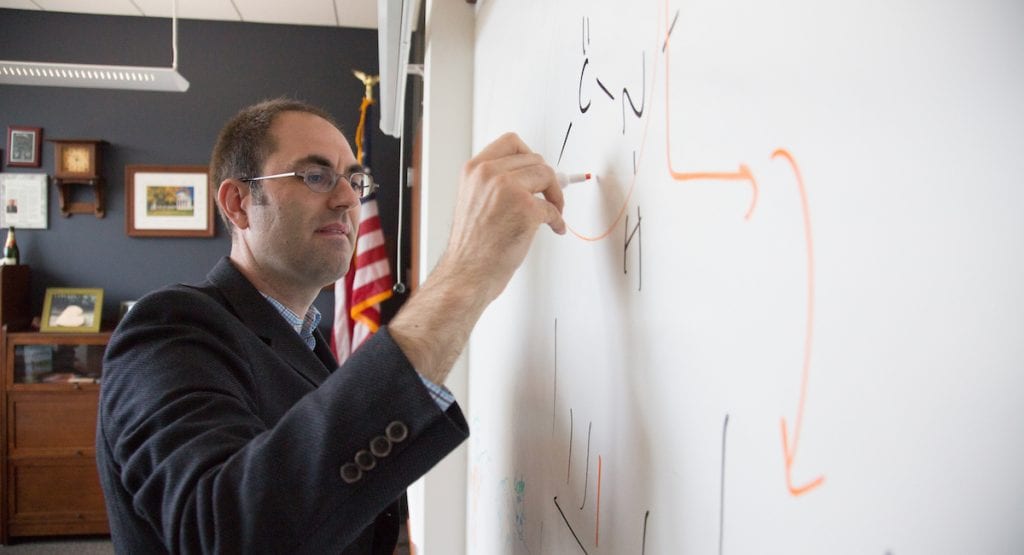28 Aug Multi-omic data and interactive web tool made publicly available to aid COVID-19 research

Josh Coon, Morgridge investigator in metabolism
Why is it that some COVID-19 patients become extremely ill and die, while others experience only mild symptoms?
The molecular underpinnings of COVID-19 are the subject of a recent collaboration between the Morgridge Institute for Research, the University of Wisconsin-Madison, and Albany Medical College. Their study uses mass spectrometry, RNA sequencing, and machine learning to explore the molecular traits that might influence the severity of the disease.
The project began when Dr. Ariel Jaitovich, a pulmonary and critical care physician at Albany Medical Center in New York, reached out to Josh Coon, Morgridge investigator in metabolism and professor of biomolecular chemistry at the UW-Madison School of Medicine and Public Health. They identified that the project could include RNA sequencing data with a greater computational scope, and brought on Ron Stewart, Morgridge investigator and associate director of bioinformatics to lead those efforts.
Early in the COVID-19 epidemic, Jaitovich noted that patients who were admitted to the hospital for critical care displayed a variety of clinical outcomes that ranged in severity while the impacts of the novel coronavirus were still unknown.
“We want to help people,” says Jaitovich. “We want to spend some energy in this terrible time to see if we can help the suffering people…that was the primary driver.”
Jaitovich and Coon, who had previously collaborated on a proteomic analysis in chronic obstructive pulmonary disease patients and animal models, recognized that a systemic, multi-omic approach could potentially help characterize the range of disease caused by this novel viral infection.
“The most impact we can probably have is to get this [data] into the hands of others as quickly as possible,” Coon adds. “I think that was something we thought about from the very beginning—how would we contribute to the global effort.”



